Capital & Counties Bank
Capital & Counties bank
Landmark building on the corner of High Street & Princes Street
The Capital & Counties Bank was formed in 1877 and originally called the Hampshire & North Wilts Banking Company. It was a result of a merger between two already well-established joint-stock banks, the Hampshire Banking Company and the North Wilts Banking Company. It was renamed Capital & Counties in 1878 to provide a less provincial title. By 1918 it had 473 branches, including the branch in Yeovil.
The branch bank in Yeovil was built on the corner of Princes Street and High Street, replacing a two-storey building that had been the shop premises and home of furniture maker Henry White, shown below in a rare photograph. The new bank building, which opened in the summer of 1897, was designed by Yeovil architect J Nicholson Johnston, A.R.I.B.A. and constructed by Bartlett & Son of Yeovil.
The following is from the 20 May 1898 edition of The Building News “The erection of this building is now being proceeded with. The site is a peculiar one, and one of the most important in the town, at the junction of High-street and Princes-street. The building is of Ham stone, and consists of the bank itself on the ground-floor with strong-room in basement, the upper floors are devoted to a manager’s residence. The desks, partitions, and fittings of the bank are of oak. Fireproof floors and partitions are to be used, and the bank is to be heated by hot water. Messrs. Bartlett and Son, of Yeovil, are the contractors. The architect is Mr J Nicholson Johnston, A.R.I.B.A.”
Capital & Counties had continued to operate very much like a 19th century bank well into the 20th century. As a result, it was starting to lose its competitive edge. When Lloyds Bank offered to take it over in 1918, the Bank recognised the benefits that the merger would bring.
National Provincial Bank of England was founded in 1828 and went through a period of acquisitions during the latter half of the 19th century. By 1900 the bank had around 200 branches. A half share in Lloyds Bank (France) Ltd was acquired in 1918. In 1918 National Provincial Bank of England merged with the important Union of London & Smiths Bank Ltd, which had over 230 branches, and was restyled National Provincial & Union Bank of England Ltd. The new bank had over 700 branches, including this branch in Yeovil.
The bank’s name was shortened to National Provincial Bank Ltd in 1924. In 1968 the bank announced its merger with Westminster Bank, but it continued to trade under its own name until vesting day of National Westminster Bank in 1970.
The building was later occupied by the Bristol and West Building Society. In 2005, Bristol & West sold its savings and investment business to the Britannia Building Society. The deal also included Bristol & West's branch network, including the Yeovil branch.
The Britannia merged with The Co-operative Banking Group in 2009 and today the building is a branch of the Co-operative Bank.
gallery
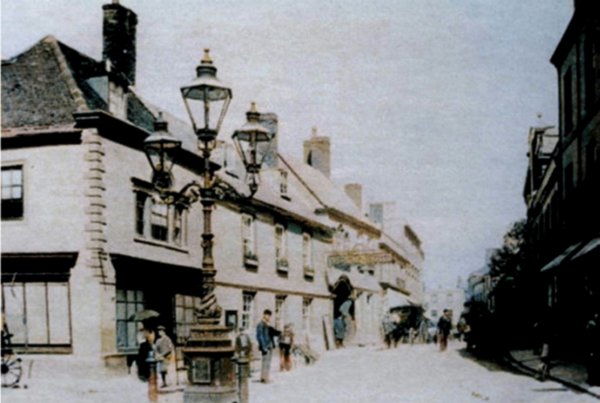
This colourised photograph
features in my
book 'Yeovil From Old Photographs'.
This is about the earliest photograph I've found of High Street - it was taken between 1887 (when the 3-light Sugg lamp in the foreground was presented to the town to celebrate the Golden Jubilee of Queen Victoria) and 1897 (when the three storey Capital and Counties Bank opened on the corner of High Street and Princes Street - replacing the building seen here at left). Of greatest interest, perhaps, is that this building preceding the bank, the home and shop of furniture maker Henry White, had an arched Venetian window at first floor similar to that above the Mermaid's entrance.
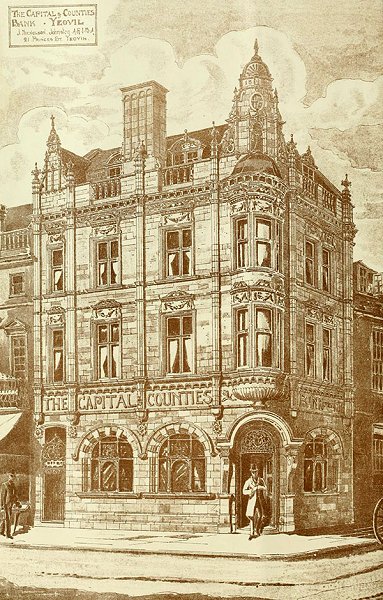
An original sketch by the architect J Nicholson Johnston for the proposed new Capital & Counties Bank premises on the corner of Princes Street, at left, and High Street, at right. Published in the 29 June 1898 edition of The Building News.
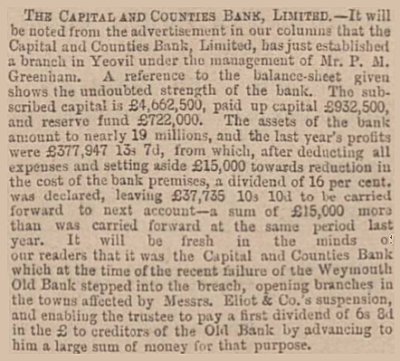
The notice of opening of the new Capital & Counties Bank from the 23 July 1897 edition of the Western Gazette.

The Capital & Counties Bank, in a colourised photograph of 1906. For all its imposing grandeur, the actual area taken up by the building on the ground is relatively small.
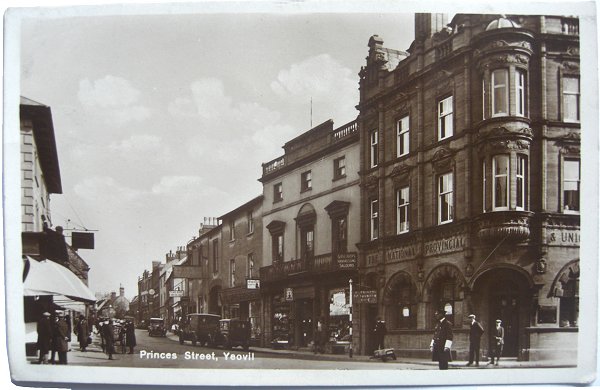
From my
collection
This postcard of the southern end of Princes Street dates to the 1930s, with the bank as a branch of the National Provincial & Union Bank. Note the traffic policeman at bottom right patiently waiting for some traffic.
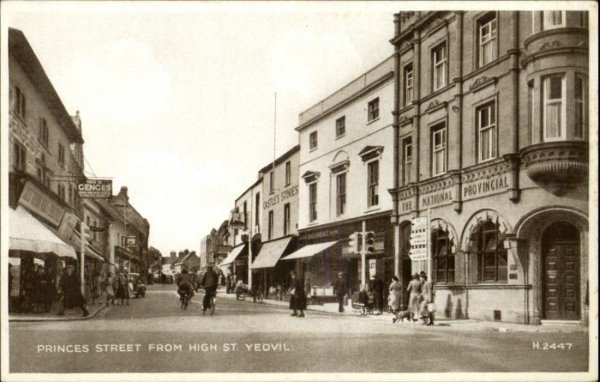
From my
collection
A postcard dated 1949 with the bank as a branch of the National Provincial & Union Bank.